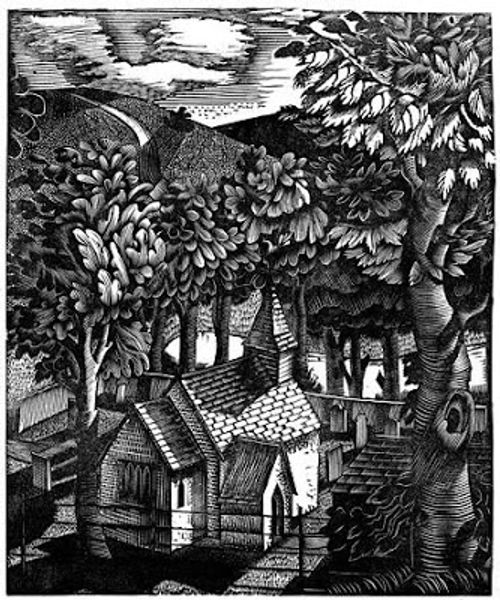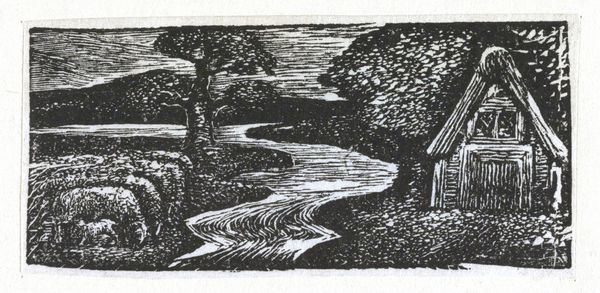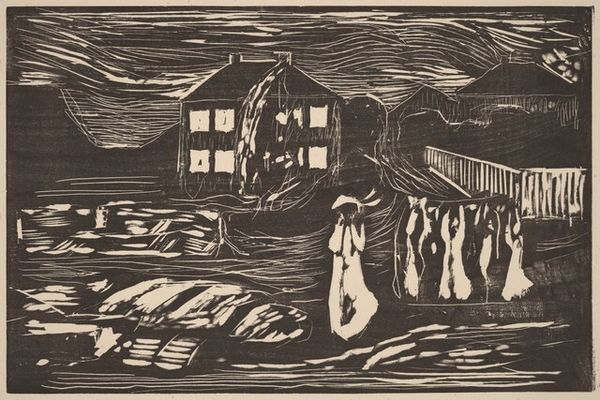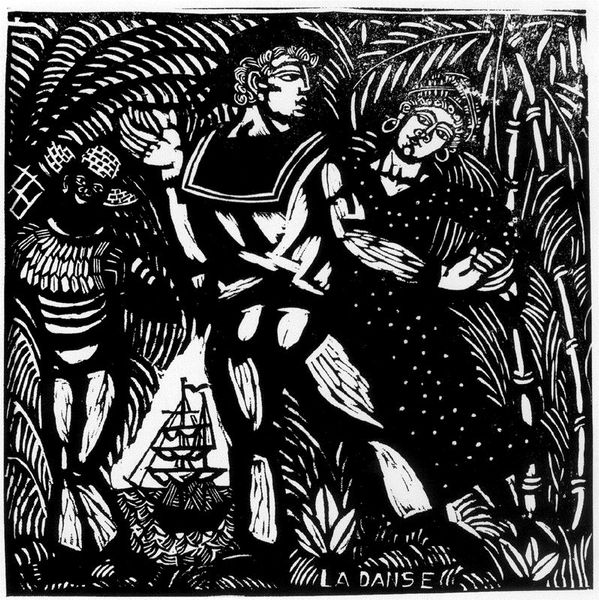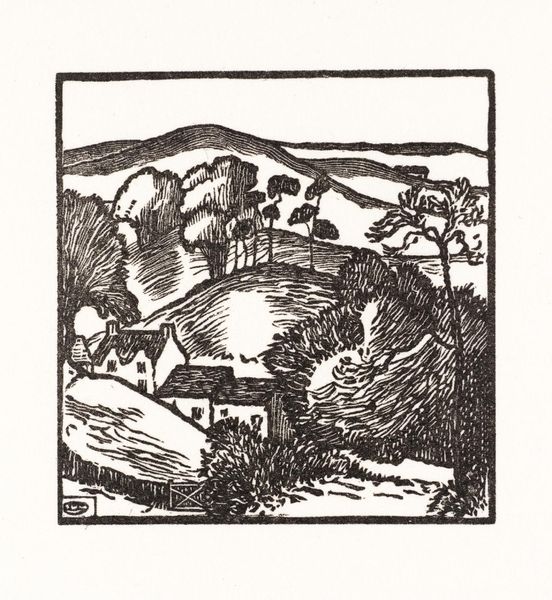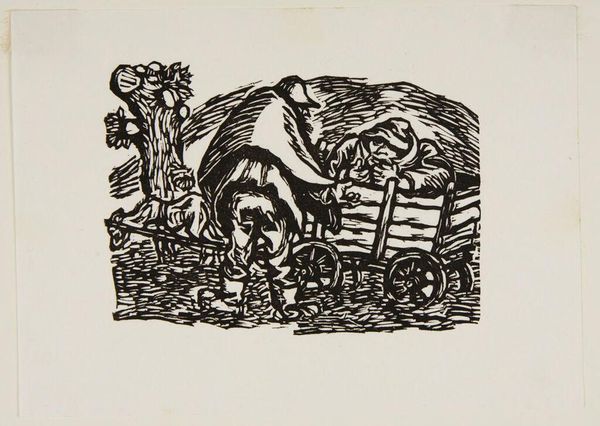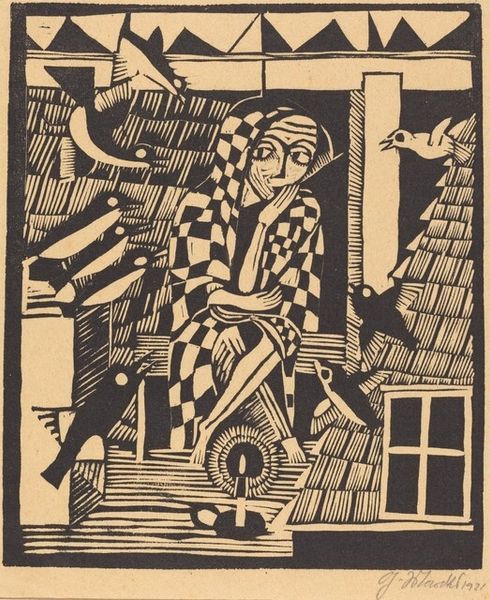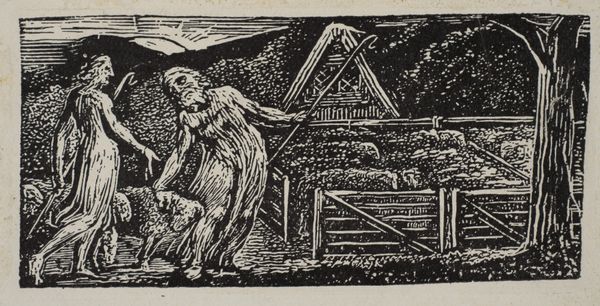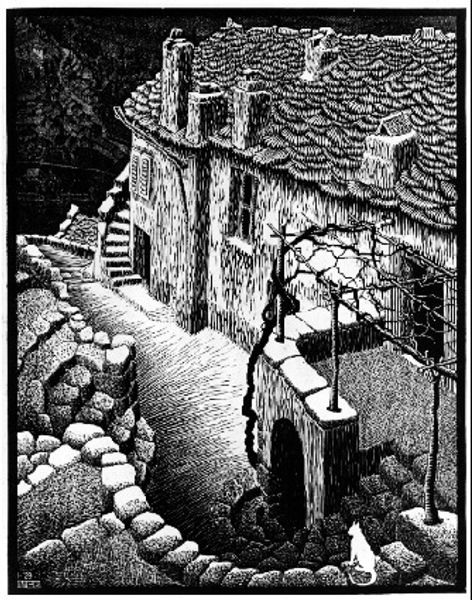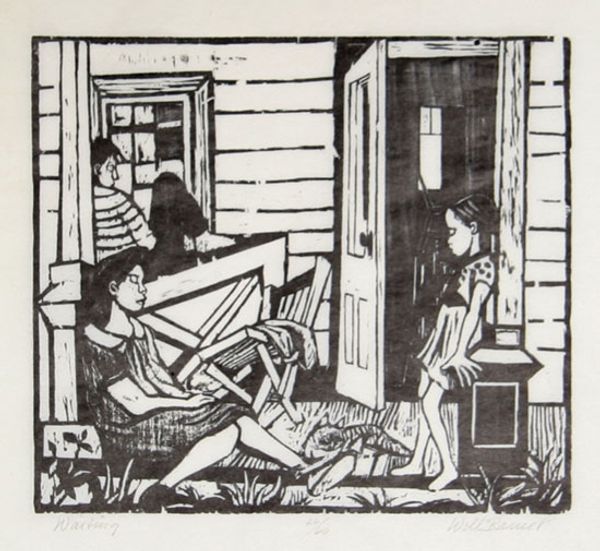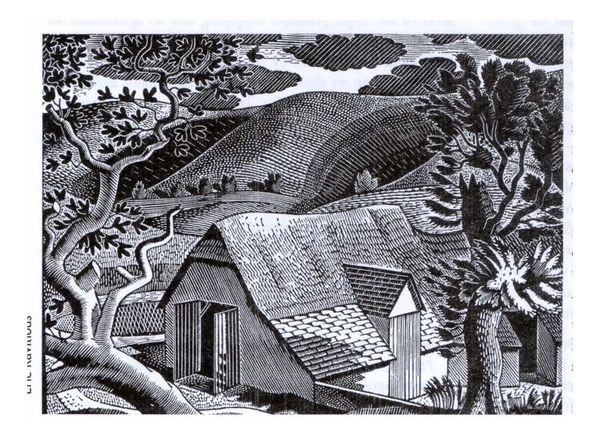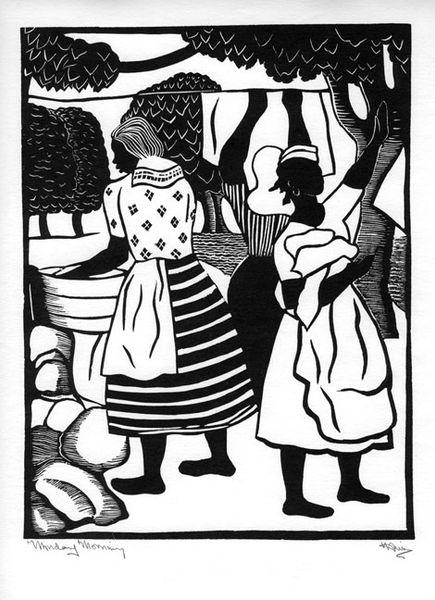
Woodcut Showing Hammersmith, Illustrating the Book the Devil's Devices, Or, Control Versus Service by Hilary Pepler 1915
0:00
0:00
drawing, print, woodcut
#
drawing
#
art-nouveau
#
narrative-art
# print
#
woodcut
#
line
#
cityscape
Copyright: Public domain
Curator: This is Eric Gill's woodcut from 1915, titled "Woodcut Showing Hammersmith, Illustrating the Book the Devil's Devices, Or, Control Versus Service by Hilary Pepler." Editor: It’s so graphic, almost severe. The black and white creates these stark contrasts that give it a real immediacy, but there’s a serenity in the garden scene, too. The clean laundry contrasts the industrial-style architecture. Curator: Indeed, Gill was deeply influenced by medieval imagery. Notice the stylized rendering, flattening perspective to emphasize the symbolism inherent in everyday life. The home with "No. 27" on the door reminds me of the English domesticity depicted by artists associated with the Arts and Crafts Movement. Editor: I see what you mean. And it’s fascinating to consider that it's a woodcut. Can you imagine the labor that goes into carving such detail into the block? The precision and care that goes into creating each line and shape—it feels almost devotional. Curator: Precisely. Gill converted to Catholicism and incorporated Christian iconography into many of his works, although I'd argue that you also have a view of an impending doom in his work because of the stark contrast he uses between life and labour. The visual language creates this dichotomy. In "The Devil's Devices", the book from which this image originated, we might even say the clothing on the line almost functions like heraldry! Editor: The use of woodcut connects it directly to a longer lineage of affordable, accessible art, reaching directly back to Dürer's prints or block books from even further back. How was this type of reproducible art sold at this time? Who got access to images such as these? Were they the privileged few, or was Gill trying to make his images accessible to a broad base of folks at a modest price? Curator: Considering this question is helpful to reveal this work’s historical relevance. The work engages themes of labor, service, and control. Seeing them in context to urban London, it can be interpreted on many levels—philosophically, historically, psychologically, even. It also allows the audience to find themselves within the landscape of Hammersmith, London, with their own symbolic associations to the city, the garden, the workers' attire and even domesticity itself. Editor: Right. What first seemed simple starts unfolding in layers. Thanks for helping me unpack it. Curator: It's these intersections of process and meaning that I find endlessly compelling. Thanks for your insightful observations!
Comments
No comments
Be the first to comment and join the conversation on the ultimate creative platform.
